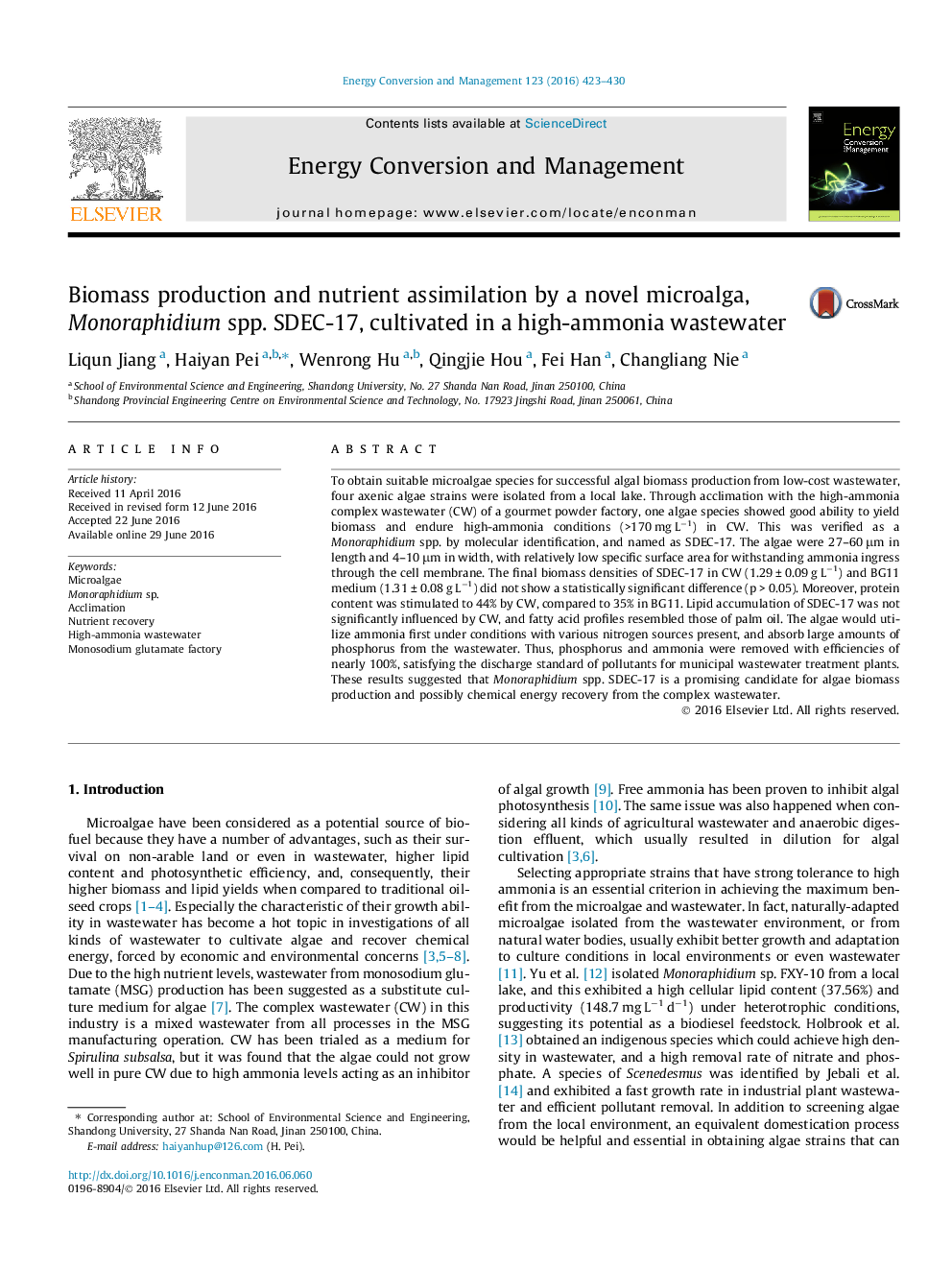| کد مقاله | کد نشریه | سال انتشار | مقاله انگلیسی | نسخه تمام متن |
|---|---|---|---|---|
| 760146 | 1462839 | 2016 | 8 صفحه PDF | دانلود رایگان |

• The algae Monoraphidium SDEC-17 was identified as a suitable feedstock for biofuel.
• SDEC-17 has been domesticated to survive in high-ammonia wastewater (CW).
• SDEC-17 exhibited robust growth and nutrient assimilation in CW.
• CW improved protein accumulation of SDEC-17.
To obtain suitable microalgae species for successful algal biomass production from low-cost wastewater, four axenic algae strains were isolated from a local lake. Through acclimation with the high-ammonia complex wastewater (CW) of a gourmet powder factory, one algae species showed good ability to yield biomass and endure high-ammonia conditions (>170 mg L−1) in CW. This was verified as a Monoraphidium spp. by molecular identification, and named as SDEC-17. The algae were 27–60 μm in length and 4–10 μm in width, with relatively low specific surface area for withstanding ammonia ingress through the cell membrane. The final biomass densities of SDEC-17 in CW (1.29 ± 0.09 g L−1) and BG11 medium (1.31 ± 0.08 g L−1) did not show a statistically significant difference (p > 0.05). Moreover, protein content was stimulated to 44% by CW, compared to 35% in BG11. Lipid accumulation of SDEC-17 was not significantly influenced by CW, and fatty acid profiles resembled those of palm oil. The algae would utilize ammonia first under conditions with various nitrogen sources present, and absorb large amounts of phosphorus from the wastewater. Thus, phosphorus and ammonia were removed with efficiencies of nearly 100%, satisfying the discharge standard of pollutants for municipal wastewater treatment plants. These results suggested that Monoraphidium spp. SDEC-17 is a promising candidate for algae biomass production and possibly chemical energy recovery from the complex wastewater.
Journal: Energy Conversion and Management - Volume 123, 1 September 2016, Pages 423–430